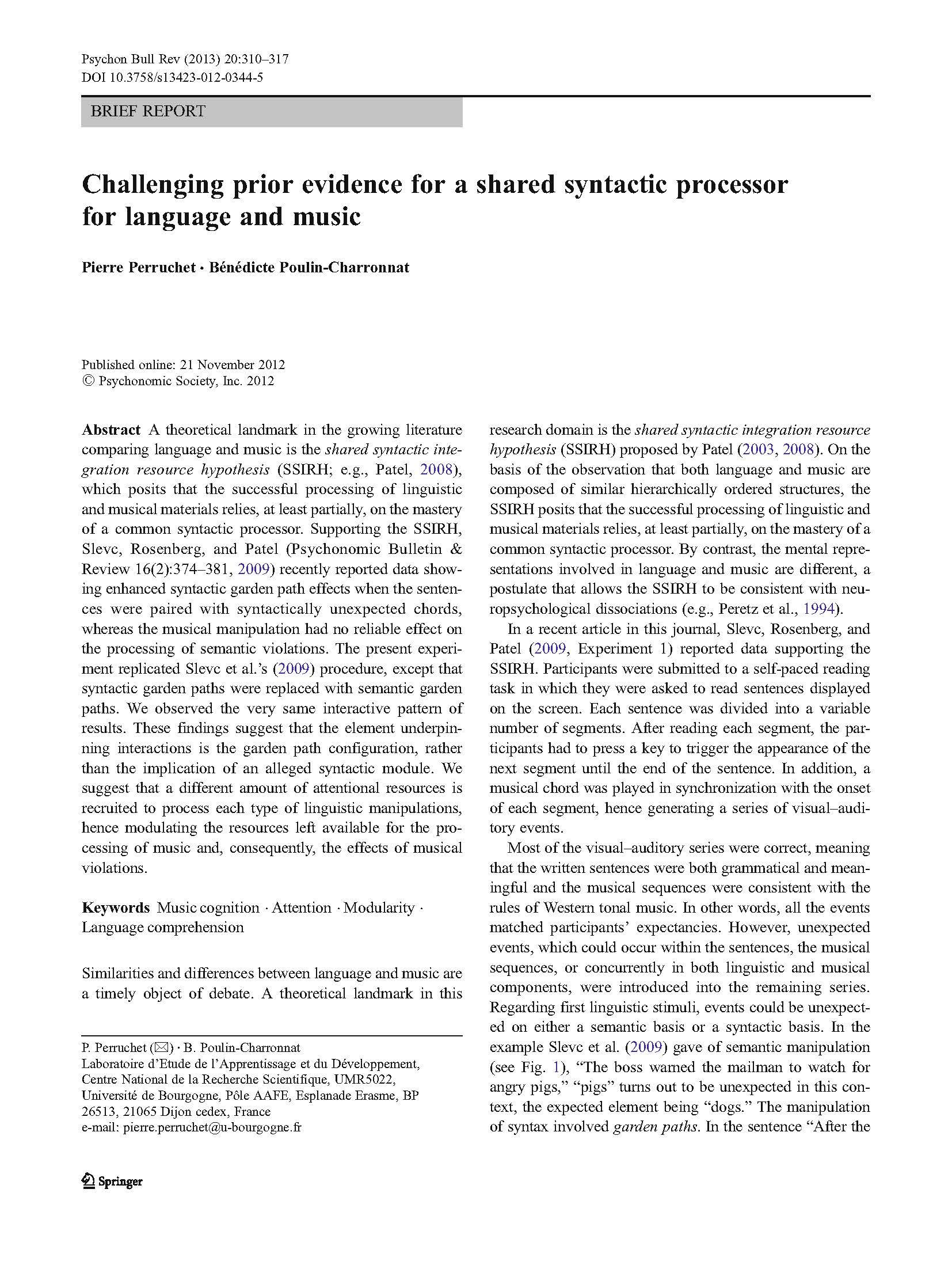A theoretical landmark in the growing literature comparing language and music is the shared syntactic integration resource hypothesis (SSIRH; e.g., Patel, 2008), which posits that the successful processing of linguistic and musical materials relies, at least partially, on the mastery of a common syntactic processor. Supporting the SSIRH, Slevc, Rosenberg, and Patel (Psychonomic Bulletin & Review 16(2):374–381, 2009) recently reported data showing enhanced syntactic garden path effects when the sentences were paired with syntactically unexpected chords, whereas the musical manipulation had no reliable effect on the processing of semantic violations. The present experiment replicated Slevc et al.’s (2009) procedure, except that syntactic garden paths were replaced with semantic garden paths. We observed the very same interactive pattern of results. These findings suggest that the element underpinning interactions is the garden path configuration, rather than the implication of an alleged syntactic module. We suggest that a different amount of attentional resources is recruited to process each type of linguistic manipulations, hence modulating the resources left available for the processing of music and, consequently, the effects of musical violations.
Challenging prior evidence for a shared syntactic processor for language and music
